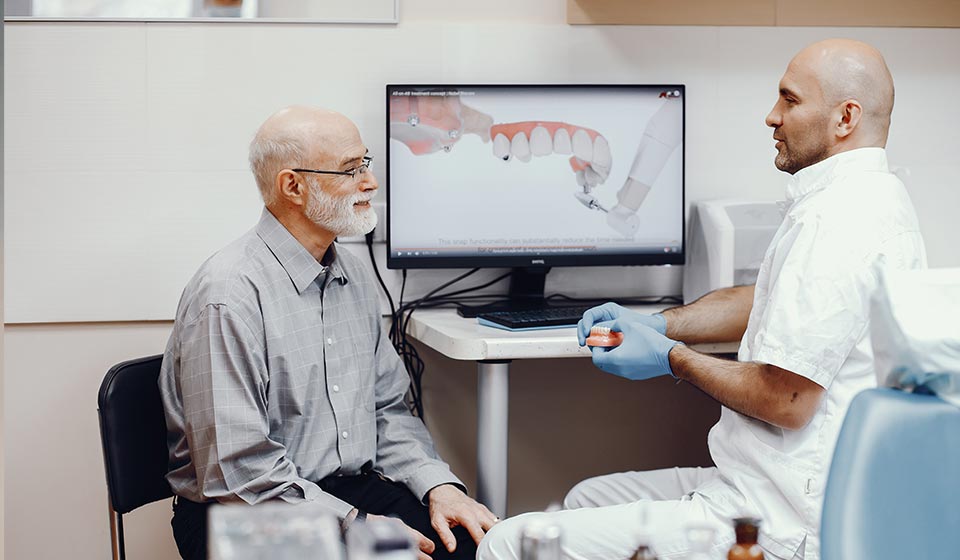
What to Expect During the Dental Implant Procedure in Washington, DC
August 15, 2024 10:55 am |Dental implants have become a popular and effective solution for replacing missing teeth, offering a durable and natural-looking alternative to traditional dentures or bridges. If you’re considering dental implants in Washington, DC, understanding what to expect during the procedure can help ease any anxieties and prepare you for a successful outcome. In this blog, we’ll walk you through the typical steps involved in the dental implant procedure, from the initial consultation to the final restoration.
1. Initial Consultation and Planning
The first step in the dental implant process is a thorough consultation with your dentist or oral surgeon. During this initial visit, your dental professional will evaluate your oral health and determine if you’re a good candidate for implants. This evaluation typically includes:- Medical History Review: Your dentist will review your medical history and discuss any underlying health conditions that might affect the procedure.
- Dental Examination: A comprehensive dental exam will be conducted, including digital X-rays or 3D imaging, to assess the condition of your jawbone and surrounding teeth. This helps in planning the precise placement of the implants.
- Treatment Planning: Based on the examination results, your dentist will create a customized treatment plan. This plan will outline the number of implants needed, the type of restoration required, and the overall timeline for the procedure.
2. Placement of the Dental Implants
Once the treatment plan is finalized, the next step is the surgical placement of the dental implants. This procedure is typically performed under local anesthesia to ensure you’re comfortable and pain-free. Here’s what you can expect during the implant placement:- Preparation: The dentist or oral surgeon will prepare the implant site by making a small incision in the gum tissue to expose the underlying bone.
- Implant Placement: The dental implant, a titanium post, is carefully inserted into the prepared socket in the jawbone. Titanium is used because it integrates well with bone tissue through a process called osseointegration.
- Gum Closure: After the implant is placed, the gum tissue is stitched back in place. In some cases, a temporary restoration or healing abutment may be placed to protect the implant site while it heals.
3. Healing and Osseointegration
After the dental implant is placed, a healing period is necessary for the implant to integrate with the jawbone. This process, known as osseointegration, typically takes several months (usually between 3 to 6 months). During this time, the bone tissue will grow around the implant, creating a strong foundation for the final restoration.- Post-Operative Care: Following the surgery, you may experience some swelling, bruising, or discomfort, which is normal. Your dentist will provide instructions for managing these symptoms, including pain relief medications and oral hygiene practices.
- Regular Check-Ups: You’ll need to attend follow-up appointments to monitor the healing process and ensure that the implant is integrating properly with the bone.
4. Placement of the Abutment
Once osseointegration is complete, the next step is placing the abutment. The abutment is a small connector piece that will be attached to the top of the dental implant. It serves as the attachment point for the final restoration (crown, bridge, or denture).- Abutment Placement: This minor procedure involves making a small incision in the gum tissue to expose the implant. The abutment is then attached to the implant, and the gum tissue is stitched back around it.
- Impression and Fit: After the abutment is placed, your dentist will take impressions of your mouth to create a custom-made restoration that will fit securely over the abutment.
5. Final Restoration
The final step in the dental implant process is the placement of the permanent restoration. This could be a single crown, a bridge, or a denture, depending on the number of implants and the treatment plan.- Restoration Placement: Once the custom restoration is ready, your dentist will carefully place it over the abutment and make any necessary adjustments to ensure a proper fit and alignment.
- Final Adjustments: Your dentist will check the bite and make any final adjustments to ensure that the restoration functions properly and blends seamlessly with your natural teeth.
Conclusion
Understanding what to expect during the dental implant procedure can help you feel more prepared and confident. If you’re considering dental implants in Washington, DC, consult a skilled dental professional at New Columbia Dentistry in Washington, DC, to discuss your options and create a personalized treatment plan. With proper care and maintenance, dental implants can provide a lasting and beautiful enhancement to your smile.Categorised in: Dental Implants
